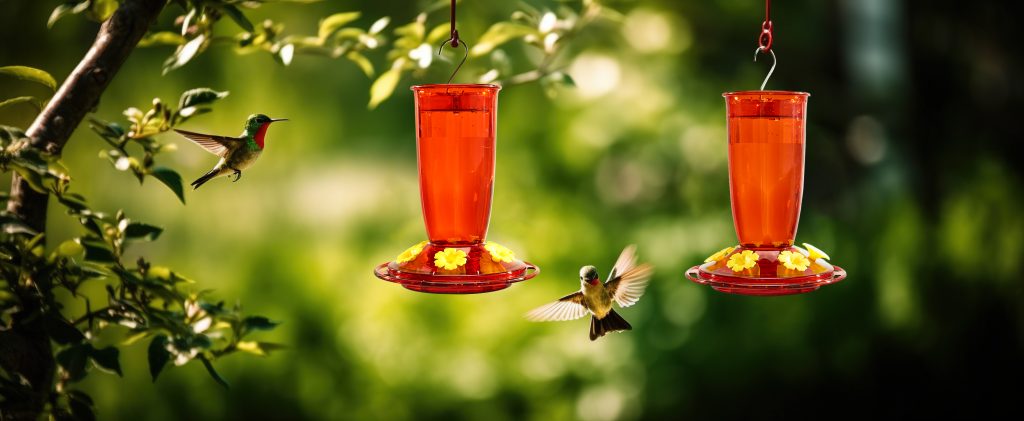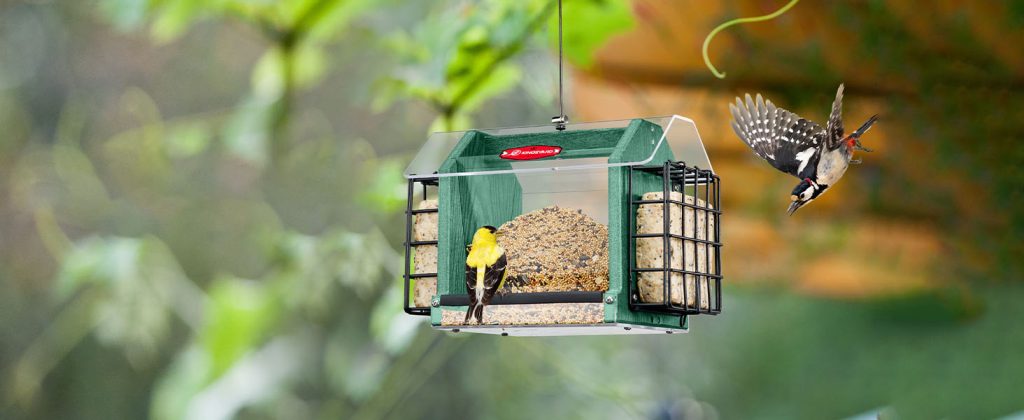Starting Guide for Hummingbird Feeding
Hummingbirds are some of the most enchanting creatures to grace our backyards. Their vibrant colors, rapid wingbeats, and graceful movements make them a joy to watch. If you’re looking to attract these tiny birds to your garden, you’ve come to the right place. This ultimate guide will walk you through everything you need to know about hummingbird feeding, from choosing the best hummingbird feeders to creating the perfect environment that will keep these delightful visitors coming back.
Table of Contents
Why Feed Hummingbirds?
Hummingbirds are not only beautiful but also vital pollinators. Feeding them provides essential nutrients, especially when natural food sources are scarce. By setting up a hummingbird feeder, you’re helping these birds thrive while enjoying the pleasure of their company.

Choosing the Right Hummingbird Feeder
When it comes to attracting hummingbirds, the right hummingbird feeders make all the difference. There are various types available, each with its advantages:
- Saucer Feeders: These feeders are easy to clean and refill. Their shallow design makes it difficult for bees and other insects to access the nectar.
- Vacuum Feeders: These are the classic inverted bottle feeders. They hold more nectar but can be trickier to clean.
- Window Feeders: These feeders attach directly to your window, offering an up-close view of feeding hummingbirds. They’re perfect for small spaces or those who want to enjoy hummingbirds from the comfort of their home.
When selecting a feeder, opt for one that’s easy to clean and maintain. Red is the preferred color for attracting hummingbirds, so look for feeders with red accents.

The Best Nectar Recipe
Hummingbirds are attracted to the sweet nectar found in flowers, but you can replicate this with a simple homemade nectar recipe. Avoid using store-bought nectars that contain artificial dyes or preservatives.
Nectar Recipe:
- Mix 1 part white granulated sugar with 4 parts water.
- Stir until the sugar is completely dissolved.
- Let the mixture cool before filling your feeder.
Never use honey, brown sugar, or artificial sweeteners, as these can harm the birds. Also, avoid adding red food coloring to the nectar—the red color of the feeder itself is enough to attract hummingbirds.
Placement of Your Hummingbird Feeder
The placement of your bird feeder is crucial in attracting and keeping hummingbirds around. Consider the following tips when deciding where to hang your feeder:
- Visibility: Place the feeder in a visible location, preferably near flowers that hummingbirds are already attracted to.
- Safety: Ensure the feeder is away from windows to prevent collisions, but close enough to allow for easy viewing.
- Shade: Hang the feeder in a shaded area to prevent the nectar from spoiling too quickly. A location with partial sunlight works well.
- Space: If you have multiple feeders, space them out to reduce competition and allow more hummingbirds to feed peacefully.

Maintaining Your Hummingbird Feeder
Keeping your hummingbird feeder clean is essential for the health of the birds. Dirty feeders can harbor mold and bacteria, which can be harmful. Here’s how to maintain your feeder:
- Regular Cleaning: Clean your feeder at least twice a week, and more often in hot weather. Use hot water and a mild soap, and rinse thoroughly to remove any soap residue.
- Refill Nectar: Refill the nectar every few days to ensure it’s fresh. If the nectar appears cloudy or has a foul odor, it’s time to replace it.
Creating a Hummingbird-Friendly Environment
In addition to feeders, creating a garden that’s inviting to hummingbirds will enhance your chances of attracting these tiny birds. Here are some tips:
- Plant Native Flowers: Hummingbirds are drawn to brightly colored, tubular flowers. Plant native species like bee balm, trumpet vine, and columbine to provide a natural food source.
- Provide Water: Hummingbirds enjoy bathing in shallow water sources. A birdbath with a gentle fountain or a mister can attract them.
- Avoid Pesticides: Pesticides can harm hummingbirds and the insects they feed on. Opt for organic gardening methods to keep your garden safe.
- Create Perches: Hummingbirds need to rest between feeding sessions. Provide perches by placing small branches or trellises around your garden.
Common Mistakes to Avoid
Even seasoned bird enthusiasts can make mistakes when it comes to feeding hummingbirds. Here are some common pitfalls and how to avoid them:
- Using the Wrong Sugar: Always use white granulated sugar. Other types of sugar, like raw or organic, contain impurities that can be harmful.
- Feeding Too Much: Overfilling the feeder can lead to wasted nectar, which will spoil quickly. Start with a small amount and refill as needed.
- Neglecting Feeder Maintenance: Dirty feeders can deter hummingbirds and harm their health. Make cleaning a regular part of your routine.
Conclusion
Attracting hummingbirds to your garden is a rewarding experience that connects you with nature in a unique way. By selecting the right hummingbird feeders, maintaining them properly, and creating a welcoming environment, you’ll ensure these tiny, vibrant birds will visit often. Remember, patience is key—once hummingbirds discover your garden, they’re likely to return year after year.
Enjoy the beauty and wonder of hummingbirds as they add life and color to your outdoor space!
For more Beginner’s guides, check here.













Post Comment